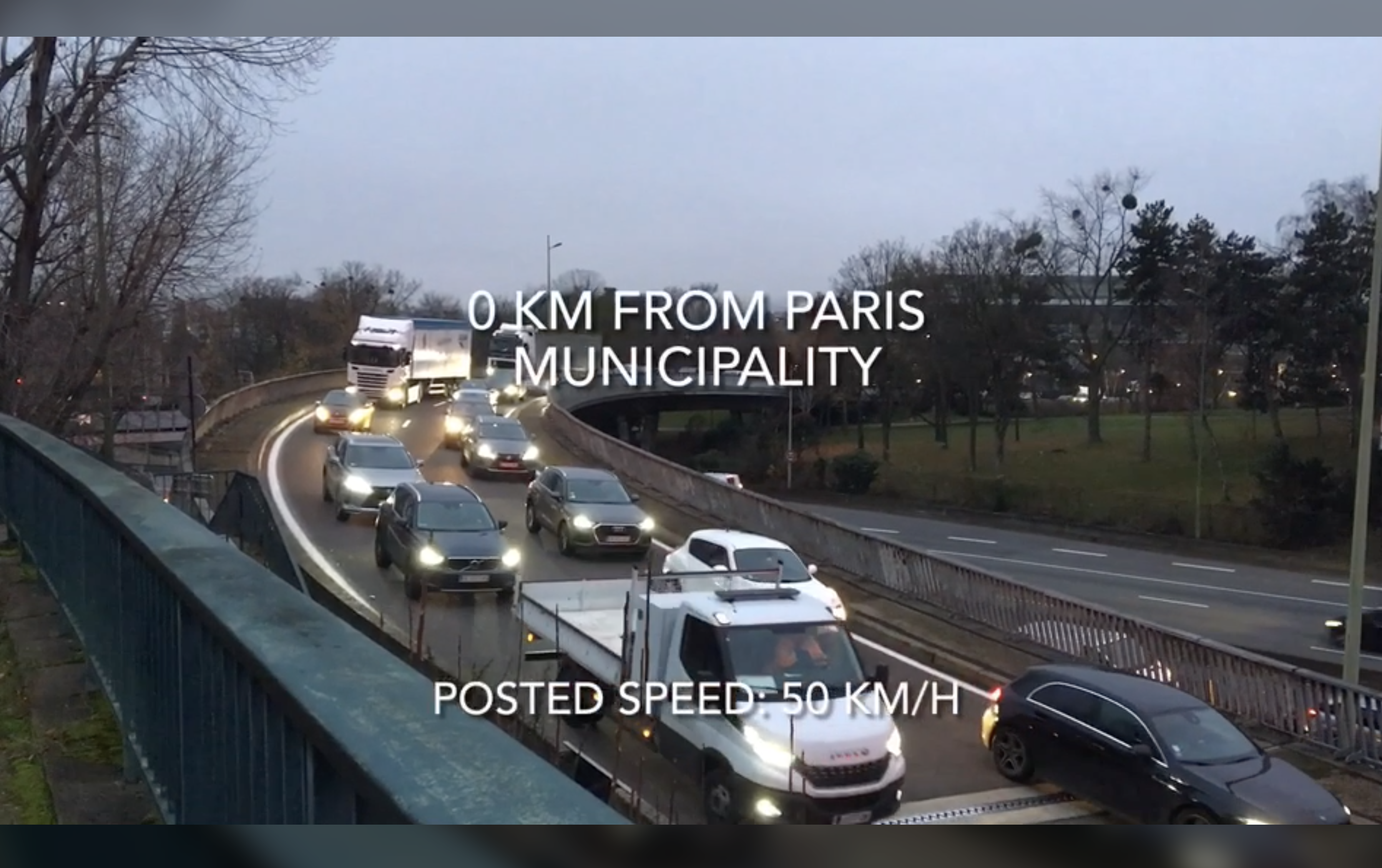“Seeing a few km bike lanes in the centre of Paris was such a stark change that it blinded us from seeing that in suburbs nothing changed. In fact, the “escape” from city centres might increase car dependence by people who are looking to live a “greener” way of life. In the process, they might give up sustainable mobility (buses, subways, bikes) for a life locked to a car.“
-Carlos holguin
At some point this year, I realized that in order to really get into the nitty-gritty of exploring the challenges to developing walkability, it is essential to focus on car dependence.
I noticed as I started doing that, the dynamics of the conversation began to change and also opened the door to dialogue with others who understand that car dominance is still the standard across metropolitan regions and without structural changes as well as offering real alternatives, that will continue.
In dialogue with Carlos Holguin, it was clear from the outset that he had a very clear understanding of the challenge and reality of contemporary car dominance and it was great to have a first chat and gain more insight about broader mobility challenges in the Paris metropolitan region.
It was also interesting to learn more about SuburVAN which he has developed as a service that offers suburban residents the possibility to get a ride to the closest rail station, as opposed to driving the short distance, leaving their car parked there all day or driving to the city and taking part in the intense road congestion. Carlos noted that one van can have the effect of reduction of 70 vehicles on the road. Rail is the most efficient as well as sustainable way to commute to the city so this expands the option for suburban residents who might otherwise not choose this mode.
Read on for the interview and please feel free to get in touch if you have tips about individuals working with issues of car dominance as well as solutions for reducing car dependence on an individual and societal level.
-Annika Lundkvist, Editor at pedestrianspace.org
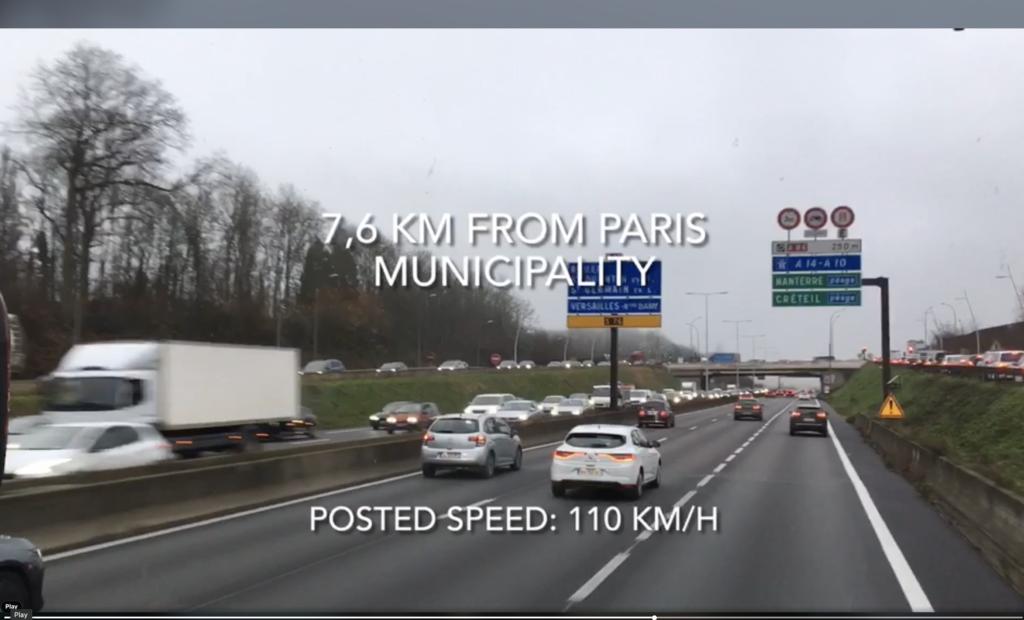
Interview with Carlos Holguin of SuburVAN
In our first recent talk where I spoke early on about the difficulties in sometimes generating quality discussion on car dependence, you noted: “I entirely agree with you that there is some kind of blindness when it comes to car dependence.” What are your thoughts on this “blindness” and how it has evolved and how we move forward continuing to engage in dialogue about car-centric planning as well as behavior (car-centricism as a mobility choice as well).
Carlos: I think the pandemic highlighted how much our cities are car-dependent, and that was a good thing. But in the return to “normality”, what attracted attention were the few changes it brought: higher biking rates, an emigration away from “cities” that’s still to be confirmed, the decrease in public transport ridership. These changes occurred in dense urban areas, but what we’ve realized is that car dependence is a disease from suburbs. Seeing a few km bike lanes in the centre of Paris was such a stark change that it blinded us from seeing that in suburbs nothing changed. In fact, the “escape” from city centres (I’m talking of Manhattan, central Washington DC, SF, Paris, London…) might increase car dependence by people who are looking to live a “greener” way of life. In the process, they might give up sustainable mobility (buses, subways, bikes) for a life locked to a car.
“Concerning walking and biking, suburbs were basically built in the 20th century, for and around the private car, and they often lack basic “soft mobility” infrastructure like sidewalks, and the speed of cars makes biking very dangerous. (…) SuburVAN enters here, because we take advantage of this car-centric infrastructure to bring commuters to railway stations in the shortest possible time, and with enough convenience to rival the private car parked in your driveway.”
-Carlos Holguin
You often post videos on LinkedIn of congested highways in Paris, in part to also offer another view to the “idealized” image we often see throughout media. Can you share more about your intention in sharing these videos as well as the logistics of how you capture them (as I understand you are often or always on bike when you do the videos?)
Carlos: These videos have risen some “heated” conversations. This relates to what I mentioned before: we are so dazzled by a few km of bike lanes in Paris that we forget that this change has reached only a minimal part of the population of the Paris METROPOLITAN AREA. Paris is a (roughly) 2 million inhabitant dense area in a 12 million inhabitants metropolitan area, and although bike lanes are very welcome, they should not make us lose sight of the bigger picture: that Paris suburban inhabitants are just as car dependents as Dallas’. For the logistic part, my commute (from the central Paris to a suburb 15 km west of Paris) involves a 10 km bike ride and then a shuttle bus to our office. On the bike, I pass nearby the junction from the western motorway/highway into the Paris ring road, and on the bus I can witness the traffic jams that suburban inhabitants go through every day to enter the central area of Paris.
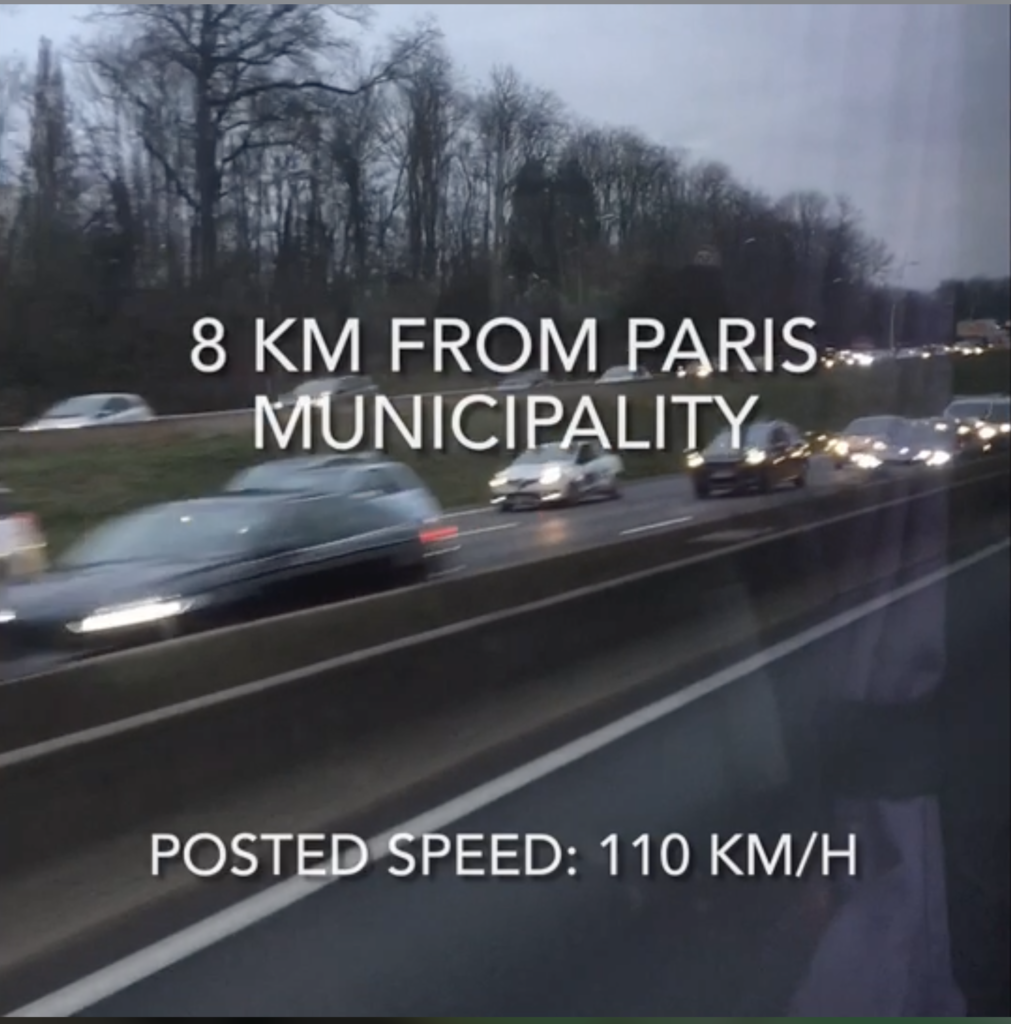
I want to address why there is a need for an option like SuburbVAN. Can you clarify what the problems are for suburban residents getting to the rail and having it as a realistic option?
Carlos: Basically, in city centres with a high population density, you have a good quality of public transport because there are plenty of people to pay for it and therefore routes are short and straight.
However, suburbs have two structural characteristics that play against good quality public transport: longer distances between “points of interest” (shops, schools, offices…) and a population that’s far more spread than in central urban areas. This makes it difficult to fill a bus, which reduces revenue, and therefore public transport companies only put the bare minimum service. This, in turn, makes travel times and routes extremely long, and this is what makes cars the only valid choice in terms of travel time.
Railways, on the other hand, work fields following our radial shape. This is why, the further you go outside from the city center, the less the number of railway stations that you can find per sq. km (or sq. mile). Concerning walking and biking, suburbs were basically built in the 20th century, for and around the private car, and they often lack basic “soft mobility” infrastructure like sidewalks, and the speed of cars makes biking very dangerous. But it’s the distances that make walking hardly an option, because unlike in city centers, you don’t find many activities, stores, etc. after a 10 minutes walk.
SuburVAN enters here, because we take advantage of this car-centric infrastructure to bring commuters to railway stations in the shortest possible time, and with enough convenience to rival the private car parked in your driveway.
“Living in a walkable area is a luxury actually. Anti-car policies benefit those living in the city but they’re really anti-social and its the poorest people who will be affected.“
-Carlos Holguin
You noted of your work location in Paris that “Where we are is the archetype of car dependency in the suburbs.” What role does SuburVAN play in shifting this? Is it a long-term solution or a contemporary solution to precede much more sweeping changes in mobility?
Carlos: Our office is located in a place that represents fully the type of urban planning made around the car. This is a private campus designed and built in the 1950’s, and which you can access by car (from Central Paris) in 25/30 minutes. But if you go there by public transport today, your journey can take three times more time. But the place is just 10 minutes away from a railway station that will take you to centre of Paris in 20 minutes. This should be a permanent solution for this specific problem, but in the long term, there has to be careful urban planning that reduces the reliance on private cars.
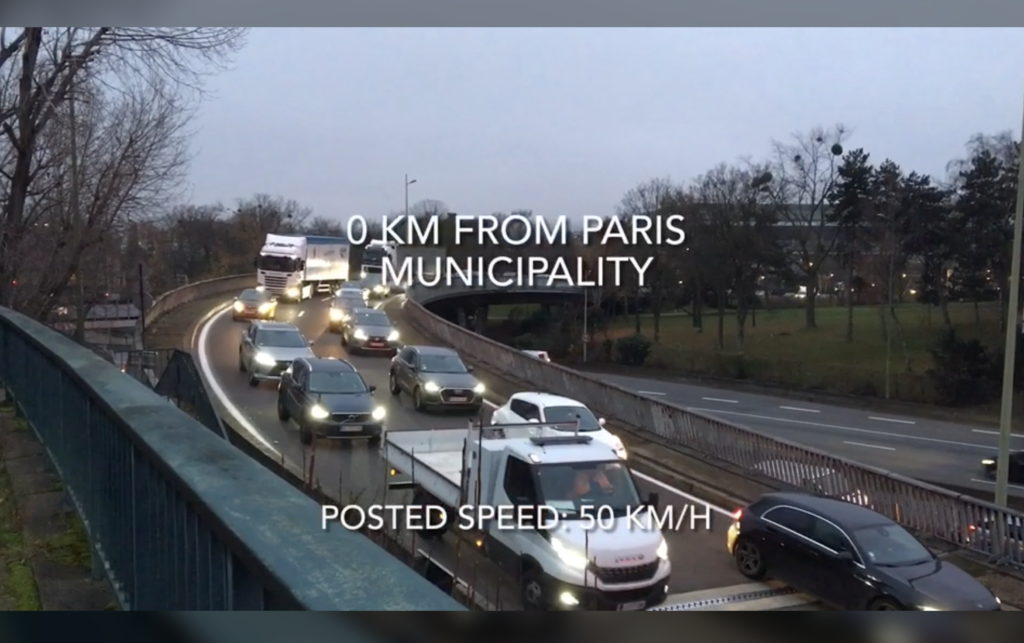
You noted that we have “100 years of a culture built around the car.” Now we need to shift the focus. What do you see as the main hurdles in doing this- shifting the dialogue, shifting the culture, shifting our mobility practices?
Carlos: This car-centric culture reflects the fact that people are considering that replacing all ICE cars with electric cars is the solution to global warming. But with minimal market share, this is already proving almost impossible from the point of view of natural resources required to build electric cars, not to mention that the poor uses of ICE cars- that they are parked 95% of the time and that 90 out of 100 cars carry only one person- would continue with electric cars.
Often in the conversation around reducing car dependence, the focus is on people that don’t have access to a car because they can’t afford one or because they can no longer drive. In my opinion, and concerning car dependence in suburbs, the conversation should be around all the people that don’t have access to public transport and which, because of that, are locked into car dependence.
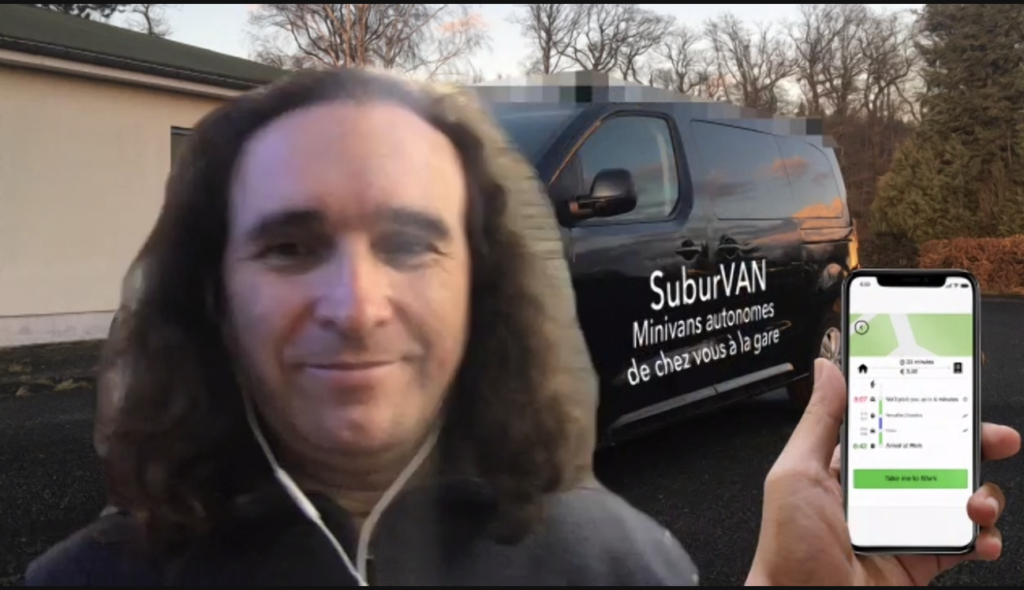
Read more by Carlos at: https://www.linkedin.com/pulse/cities-have-low-speed-shuttle-problem-im-partly-now-mission-holguin/?trackingId=

